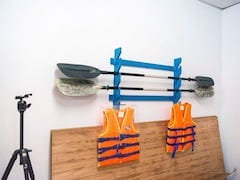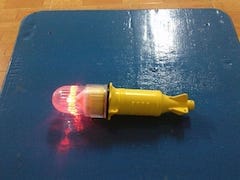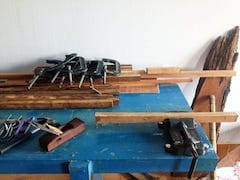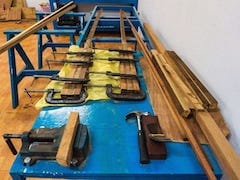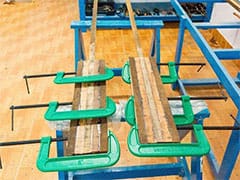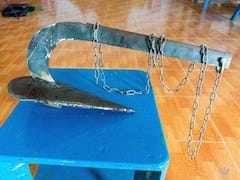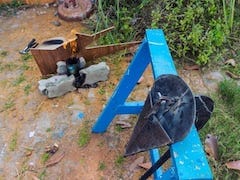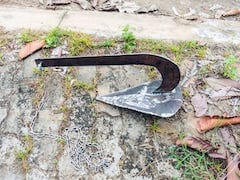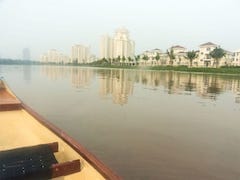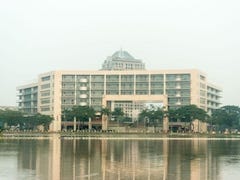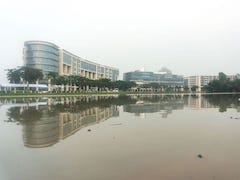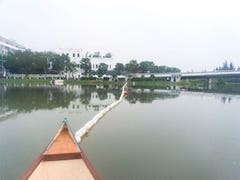 ello World – 1 has been finished, and trials showed it’s an excellent boat for solo paddling, but there’s still much work to be done to make full use of the canoe. Various miscellaneous things: a raincoat to protect the hull from weather at docking, a pole to push the canoe forward in shallow water, also to mount a signal light for occasional night going, an apparent wind indicator (wind vane) to better observe wind condition, a hand pump to drain water out when it rains, an anchor to allow going fishing anywhere on the rivers around my area without having to find a tree or a buoy to attach the canoe to… Most important of all, I want to make a rowing kit: an outrigger with two flotation units to help stabilising the boat, and two long oars.
ello World – 1 has been finished, and trials showed it’s an excellent boat for solo paddling, but there’s still much work to be done to make full use of the canoe. Various miscellaneous things: a raincoat to protect the hull from weather at docking, a pole to push the canoe forward in shallow water, also to mount a signal light for occasional night going, an apparent wind indicator (wind vane) to better observe wind condition, a hand pump to drain water out when it rains, an anchor to allow going fishing anywhere on the rivers around my area without having to find a tree or a buoy to attach the canoe to… Most important of all, I want to make a rowing kit: an outrigger with two flotation units to help stabilising the boat, and two long oars.
It could take a couple of weeks to finish everything, since I’ve just started the design, with some undecided considerations still. Slowly I would got each items done, first is the spade – shape anchor, I casted 1.5 kg of lead into the hollow space underneath, to concentrate weight into the tip (the anchor is a bit oversize and overweight for such a small canoe, some wrong calculation, but I would use it anyhow). 2 meters of steel chain, plus about 30 meters of rope will be enough for an anchorage almost anywhere. There’s still lots of works to be done, with possible more and more delay (the holidays, Christmas and New Year are coming). Meanwhile paddling is still my main pastime in a fresh morning, or in a calm sunset, any day in the week 😀.
For the past few days, I really enjoy night paddling: familiar enough with the region to navigate in the dark, northern wind has cool down the nocturnal temperature considerably, and houses, buildings along the rivers’ banks have been decorated with all kind of colourful LED and neon lights for Christmas and New Year holidays, creating picturesque and splendid sceneries. I was paddling among a dark, silent, wide space, only the marvellous lighting and the stars above the sky. Unfortunately, my GoPro camera is not very good at shooting in low – light environment, I would try to post some pictures instead, just to show how beautiful our city is this season, especially in this specific place on Crescent lake near Starlight bridge (hồ Bán Nguyệt & cầu Ánh Sao).
The more paddling I was practising, the more do I realise how much boating (and paddling, rowing, sailing, etc…) resembles life, it’s a microcosm, a metaphor for our lives, for the struggles and enjoyments we make. Any destination is just a temporary target, as life is a long journey on which we struggle to make the next leap, reaching the next milestone, while trying to enjoy the scenes on the way. And that’s why we should take our thinking, our words, our intentions, our jobs… seriously, just to make the journey a more lovely, pleasant promenade… Well, that’s enough of philosophy, 😀 I need to stop dreaming here and return to the actual works, refine my calculations, sharpen my skills… lots of things to be done in the up – coming year, year of the horse.
 he famous rubber duck is here on Crescent lake, Saigon. Just my curiosity to go there and have some poses with that huge, yellow floating object. To be precise, my childhood was not familiar to this kind of thing, such a toy at my time was consider to be… “luxurious”! The guards did not permit us to pass the floating buoy line, arghh!
he famous rubber duck is here on Crescent lake, Saigon. Just my curiosity to go there and have some poses with that huge, yellow floating object. To be precise, my childhood was not familiar to this kind of thing, such a toy at my time was consider to be… “luxurious”! The guards did not permit us to pass the floating buoy line, arghh!
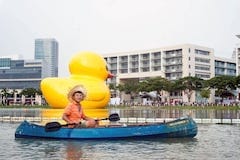
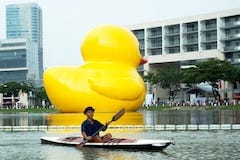
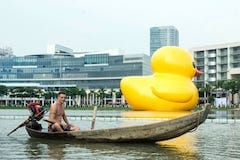
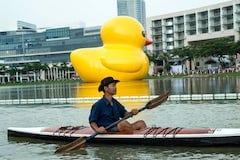
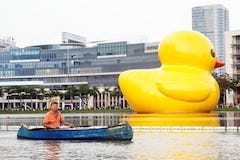
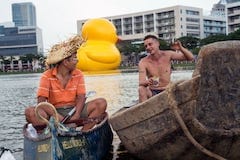
 t is not always as calm as in the video below, this time of the year, the monsoon is reversing, causing lots of turbulences. Sometimes waves are so big that I can hardly have anytime for playing around with
t is not always as calm as in the video below, this time of the year, the monsoon is reversing, causing lots of turbulences. Sometimes waves are so big that I can hardly have anytime for playing around with  ow “operating two boats” 😀, I could have more ways to play and have fun with them. Usually, me and one of my friend, each of us would go on a separate canoe / kayak, then exchange them at the midpoint of a paddling trip. It’s extremely hot out there this season, 35° ~ 39° Celsius, but that’s good for our endurence anyhow.
ow “operating two boats” 😀, I could have more ways to play and have fun with them. Usually, me and one of my friend, each of us would go on a separate canoe / kayak, then exchange them at the midpoint of a paddling trip. It’s extremely hot out there this season, 35° ~ 39° Celsius, but that’s good for our endurence anyhow.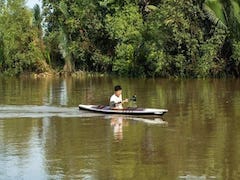
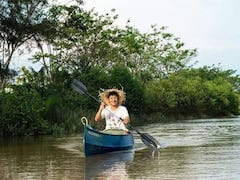
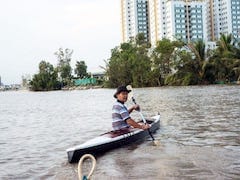
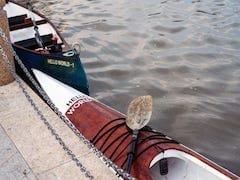
 aunched and trialled the kayak this April fool day! Can’t say how much I’m pleased with it, great speed, just like a dart slicing through water! 😀 It could take some time to learn how to handle this new kayak, the experiences are different between my two boats, but I got the right feeling on how to control it very soon.
aunched and trialled the kayak this April fool day! Can’t say how much I’m pleased with it, great speed, just like a dart slicing through water! 😀 It could take some time to learn how to handle this new kayak, the experiences are different between my two boats, but I got the right feeling on how to control it very soon.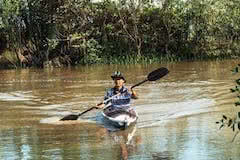
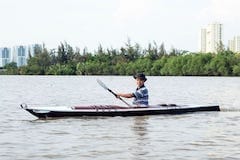

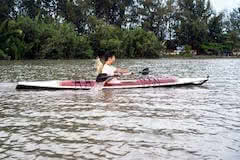
 rom the outlook, she gonna be a nice boat with simple and sporty curves! I proceed slowly and carefully, as I intend to use this boat for white – water (near coastal) areas, where it gonna be rougher and wavier, compared to the almost – calm rivers around Saigon. It need to be ‘engineered’ with a focus on durable & strength! 😀
rom the outlook, she gonna be a nice boat with simple and sporty curves! I proceed slowly and carefully, as I intend to use this boat for white – water (near coastal) areas, where it gonna be rougher and wavier, compared to the almost – calm rivers around Saigon. It need to be ‘engineered’ with a focus on durable & strength! 😀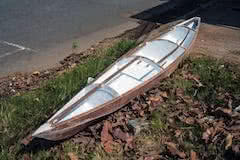
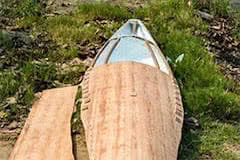
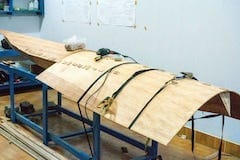
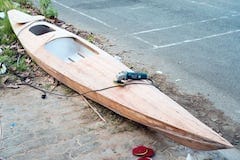
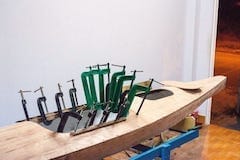
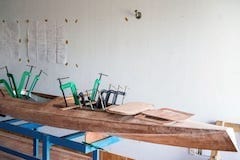
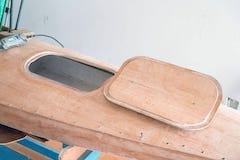
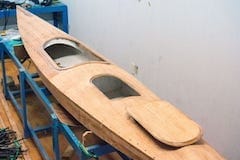
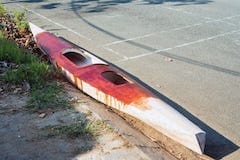
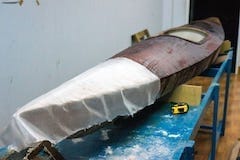
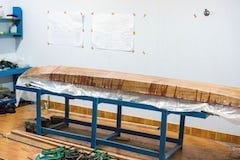
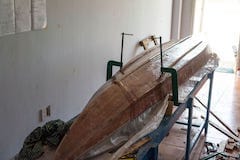
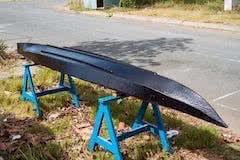
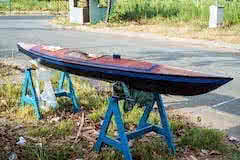
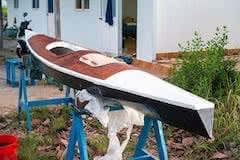
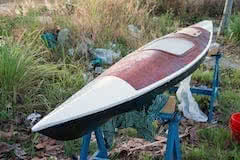
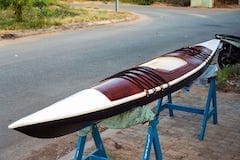
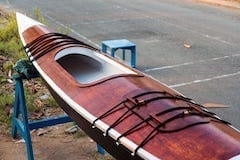
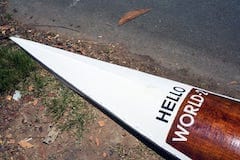
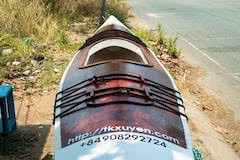
 ix months have passed since I’d started Hello World – 1, my first build, a general purpose canoe. Now it’s time to let this planned Hello World – 2 to say Hello to the world 😀. She gonna be a kayak (of Selway Fisher’s Dart 14′ design), which I hope to have better performance and somewhat better ‘open – water’ capabilities.
ix months have passed since I’d started Hello World – 1, my first build, a general purpose canoe. Now it’s time to let this planned Hello World – 2 to say Hello to the world 😀. She gonna be a kayak (of Selway Fisher’s Dart 14′ design), which I hope to have better performance and somewhat better ‘open – water’ capabilities.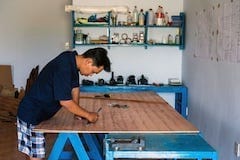
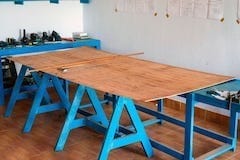
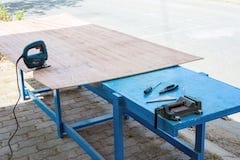
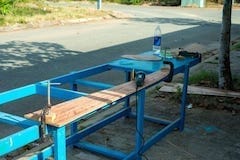
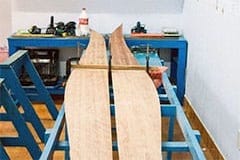
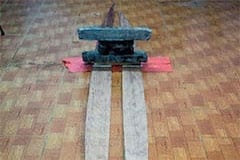
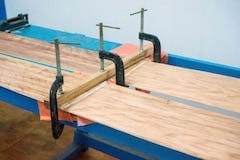
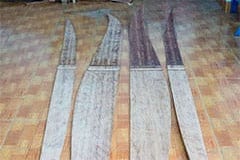
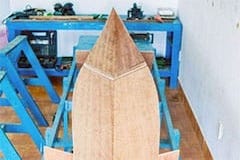
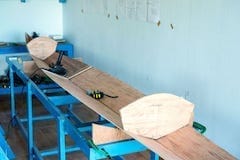
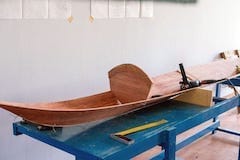
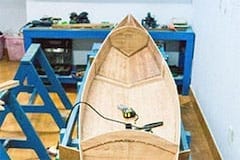
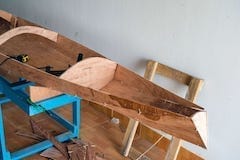
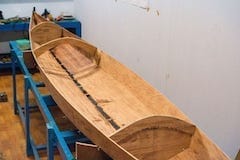
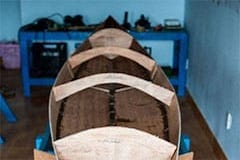
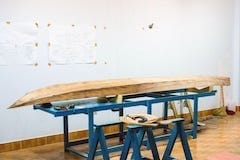
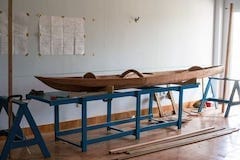
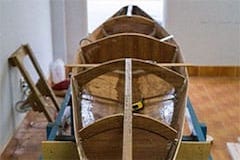
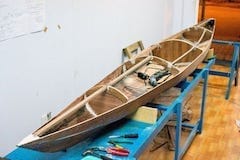
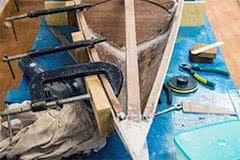
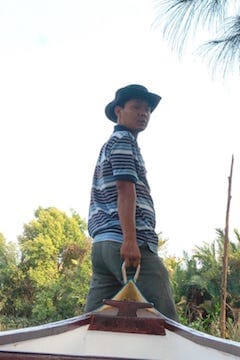
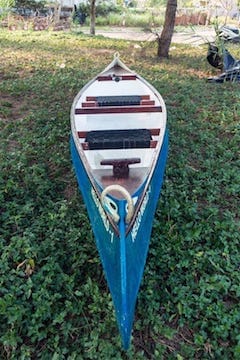
 ade my first “departure” on this first day of the new year 2014, year of the horse; a 20 km paddling roundtrip. I want to see more of that same city, from a different point of view, not that usual view of most of the 20 – years – long living here. There is another completely different Saigon, a Saigon seen from water, as on flat land, for the most part, it’s a messy city. It took me a long time to get accustomed to its main roads, especially in the southern parts, as they usually turn around and around, forming untidy, complex, bizarre networks. But if you see them from the waterways perspective, the topologies immediately become clear and easy. That reminds me the essential geo – ecological things about this southern young, energetic city…
ade my first “departure” on this first day of the new year 2014, year of the horse; a 20 km paddling roundtrip. I want to see more of that same city, from a different point of view, not that usual view of most of the 20 – years – long living here. There is another completely different Saigon, a Saigon seen from water, as on flat land, for the most part, it’s a messy city. It took me a long time to get accustomed to its main roads, especially in the southern parts, as they usually turn around and around, forming untidy, complex, bizarre networks. But if you see them from the waterways perspective, the topologies immediately become clear and easy. That reminds me the essential geo – ecological things about this southern young, energetic city… oating progress has been stagnated lately… But really I’m interested in experimenting with rowing, another way of propelling the boat besides paddling. Rowing can help building other groups of your muscles, it could produce more torque to push the canoe forward under unfavourable wind and current conditions, it should increase sustainable speed significantly, furthermore, it’s good for long – range tandem trips: with two hands aboard, ones can take turn to row and to rest. First, I make a pair of 8 feet oars: 5 planks of wood is glued and screwed together to form the oar’s handle and blade. Next is scraping and planing them into their final shapes using my new, very useful tool: a power planer. Then the 4 feet 8 inches outrigger and flotations.
oating progress has been stagnated lately… But really I’m interested in experimenting with rowing, another way of propelling the boat besides paddling. Rowing can help building other groups of your muscles, it could produce more torque to push the canoe forward under unfavourable wind and current conditions, it should increase sustainable speed significantly, furthermore, it’s good for long – range tandem trips: with two hands aboard, ones can take turn to row and to rest. First, I make a pair of 8 feet oars: 5 planks of wood is glued and screwed together to form the oar’s handle and blade. Next is scraping and planing them into their final shapes using my new, very useful tool: a power planer. Then the 4 feet 8 inches outrigger and flotations.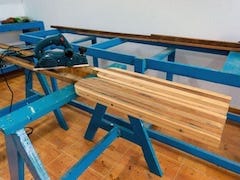
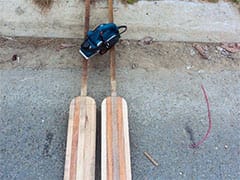
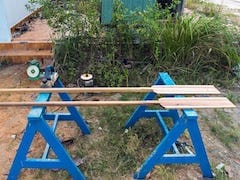
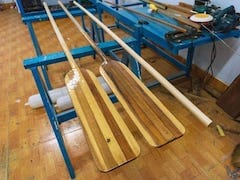
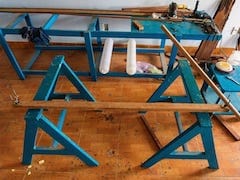
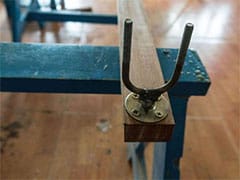
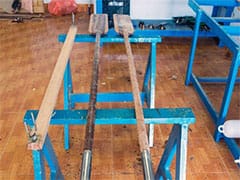
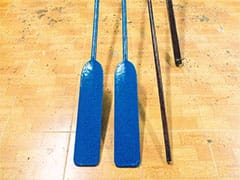
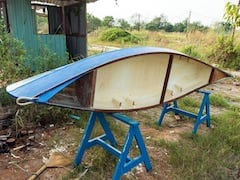
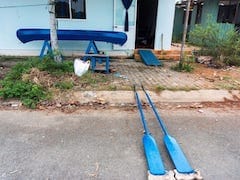
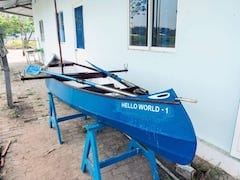
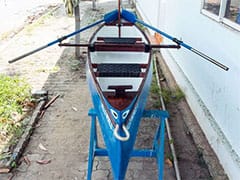
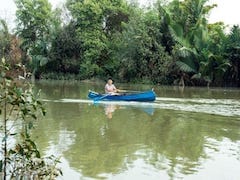
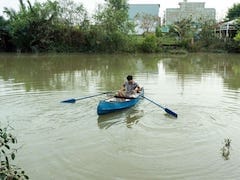
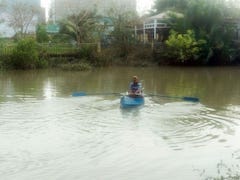
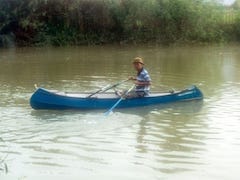
 ello World – 1 has been finished, and trials showed it’s an excellent boat for solo paddling, but there’s still much work to be done to make full use of the canoe. Various miscellaneous things: a raincoat to protect the hull from weather at docking, a pole to push the canoe forward in shallow water, also to mount a signal light for occasional night going, an apparent wind indicator (wind vane) to better observe wind condition, a hand pump to drain water out when it rains, an anchor to allow going fishing anywhere on the rivers around my area without having to find a tree or a buoy to attach the canoe to… Most important of all, I want to make a rowing kit: an outrigger with two flotation units to help stabilising the boat, and two long oars.
ello World – 1 has been finished, and trials showed it’s an excellent boat for solo paddling, but there’s still much work to be done to make full use of the canoe. Various miscellaneous things: a raincoat to protect the hull from weather at docking, a pole to push the canoe forward in shallow water, also to mount a signal light for occasional night going, an apparent wind indicator (wind vane) to better observe wind condition, a hand pump to drain water out when it rains, an anchor to allow going fishing anywhere on the rivers around my area without having to find a tree or a buoy to attach the canoe to… Most important of all, I want to make a rowing kit: an outrigger with two flotation units to help stabilising the boat, and two long oars.